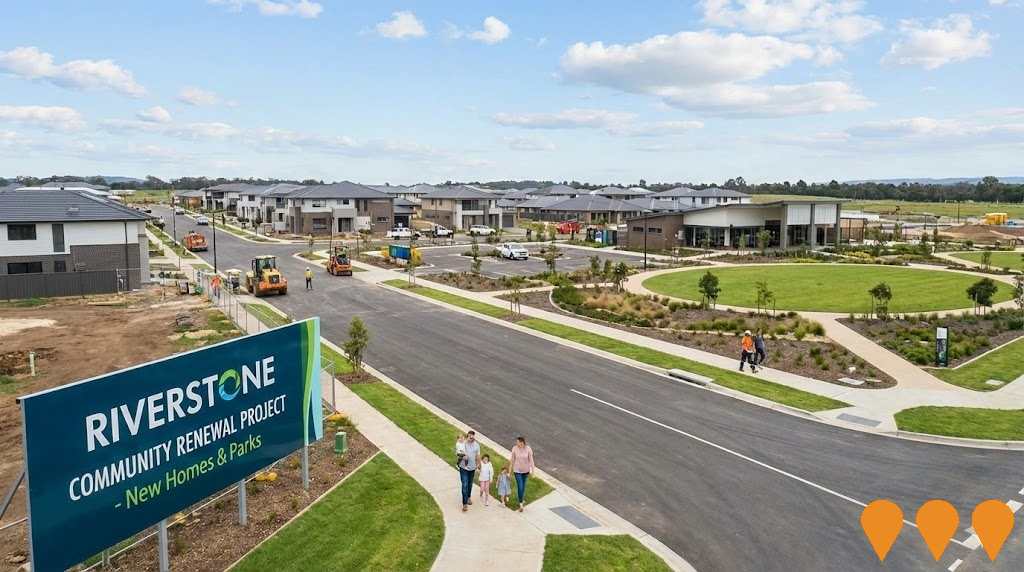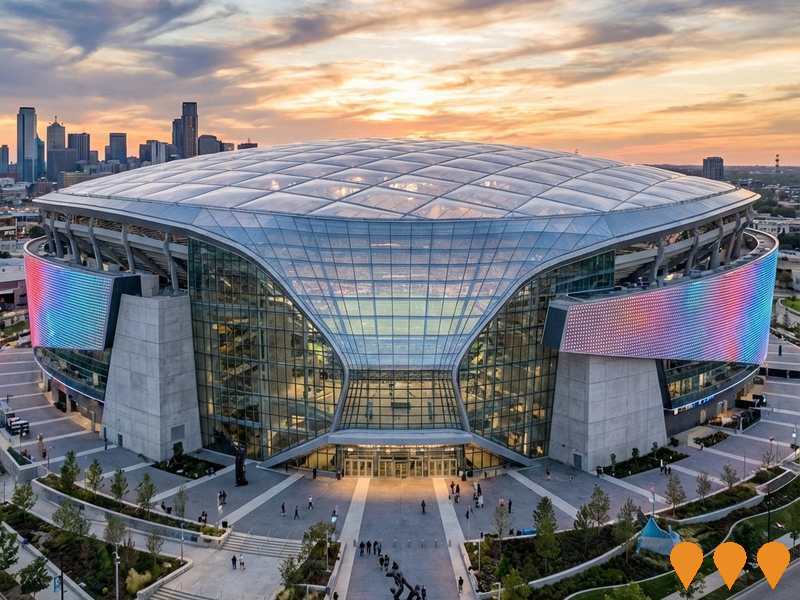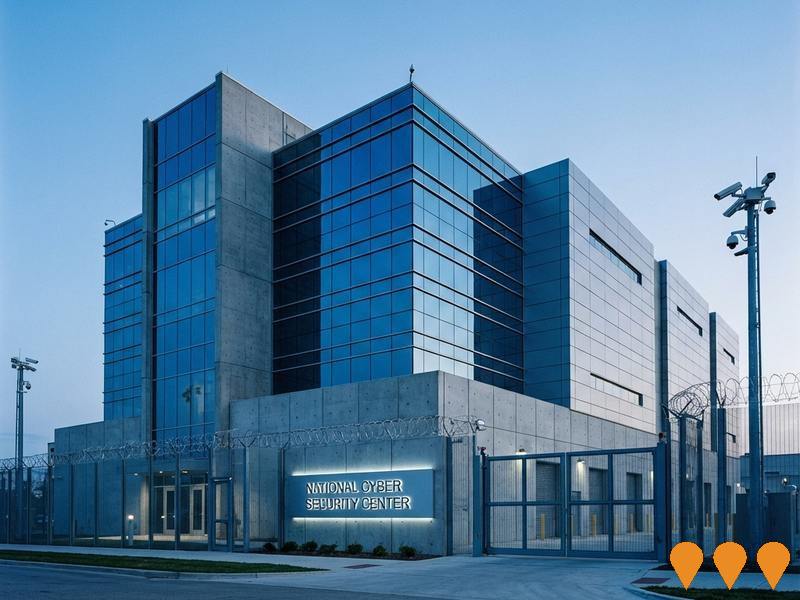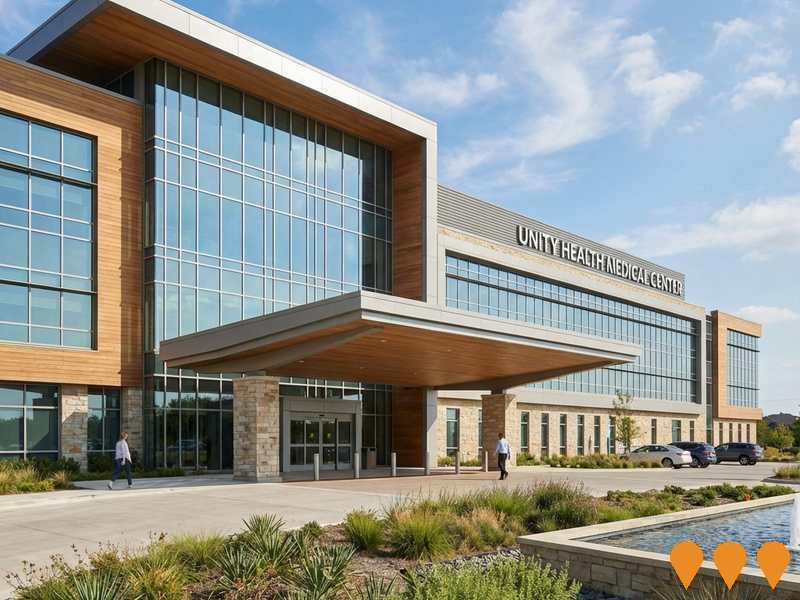Chart Color Schemes
est. as @ -- *
ABS ERP | -- people | --
2021 Census | -- people
Sales Activity
Curious about local property values? Filter the chart to assess the volume and appreciation (including resales) trends and regional comparisons, or scroll to the map below view this information at an individual property level.
Find a Recent Sale
Sales Detail
Population
Highfields lies within the top quartile of areas nationally for population growth performance according to AreaSearch analysis of recent, and medium to long-term trends
Highfields's population was around 16,953 as of Aug 2025. This reflected an increase of 2,371 people (16.3%) since the 2021 Census, which reported a population of 14,582 people. The change was inferred from the estimated resident population of 16,336 from the ABS as of June 2024 and an additional 443 validated new addresses since the Census date. This level of population equated to a density ratio of 113 persons per square kilometer. Highfields's growth exceeded the non-metro area (8.6%) and the national average, marking it as a growth leader in the region. Population growth was primarily driven by interstate migration contributing approximately 80.8% of overall population gains during recent periods.
AreaSearch adopted ABS/Geoscience Australia projections for each SA2 area, released in 2024 with 2022 as the base year. For areas not covered and years post-2032, Queensland State Government's SA2 area projections were used, released in 2023 based on 2021 data. A significant population increase was forecast for the top quartile of non-metropolitan areas nationally by 2041, with Highfields expected to grow by 5,147 persons, an increase of 26.7% over the 17 years.
Frequently Asked Questions - Population
Development
The level of residential development activity in Highfields was found to be higher than 90% of real estate markets across the country
Highfields averaged approximately 211 new dwelling approvals annually over the past five financial years, totalling 1,059 homes. As of FY-26, 54 approvals have been recorded. On average, two new residents per year per dwelling constructed were noted between FY-21 and FY-25, indicating a balanced supply and demand scenario with stable market conditions. The average construction cost value for new properties was $480,000, aligning with broader regional development trends.
In FY-26, Highfields recorded $92.4 million in commercial development approvals, reflecting high levels of local commercial activity. Compared to the Rest of Qld, Highfields had 153.0% more new home approvals per person as of FY-26. While building activity has slowed recently, it remains above national averages, indicating strong developer confidence in the area. The majority (99.0%) of new building activity involved detached dwellings, with townhouses or apartments comprising 1.0%, maintaining Highfields' traditional low-density character focused on family homes. With around 108 people per dwelling approval, Highfields exhibits growth area characteristics.
Population forecasts project an increase of 4,530 residents by 2041. Given current development patterns, new housing supply should meet demand, offering favourable conditions for buyers and potentially facilitating population growth beyond current projections.
Frequently Asked Questions - Development
Infrastructure
Highfields has emerging levels of nearby infrastructure activity, ranking in the 22ndth percentile nationally
Changes to local infrastructure significantly influence an area's performance. AreaSearch has identified 35 projects likely impacting this area. Notable ones include Kilalah Park Estate, The Avenues of Highfields, Central Highfields Masterplan, and Highfields/Kratzke/O'Brien Roads Intersections Upgrade. Relevant projects are listed below.
Professional plan users can use the search below to filter and access additional projects.
INFRASTRUCTURE SEARCH
 Denotes AI-based impression for illustrative purposes only, not to be taken as definitive under any circumstances. Please follow links and conduct other investigations from the project's source for actual imagery. Developers and project owners wishing us to use original imagery please Contact Us and we will do so.
Denotes AI-based impression for illustrative purposes only, not to be taken as definitive under any circumstances. Please follow links and conduct other investigations from the project's source for actual imagery. Developers and project owners wishing us to use original imagery please Contact Us and we will do so.
Frequently Asked Questions - Infrastructure
Botanic Highfields Retirement Village
231 single-storey manufactured homes in a land lease retirement community with premium amenities including a community hub featuring function area, kitchen and bar, cinema room, art room, lounge/games area, library, gymnasium, yoga room, and meeting rooms, located in the growing Highfields region.
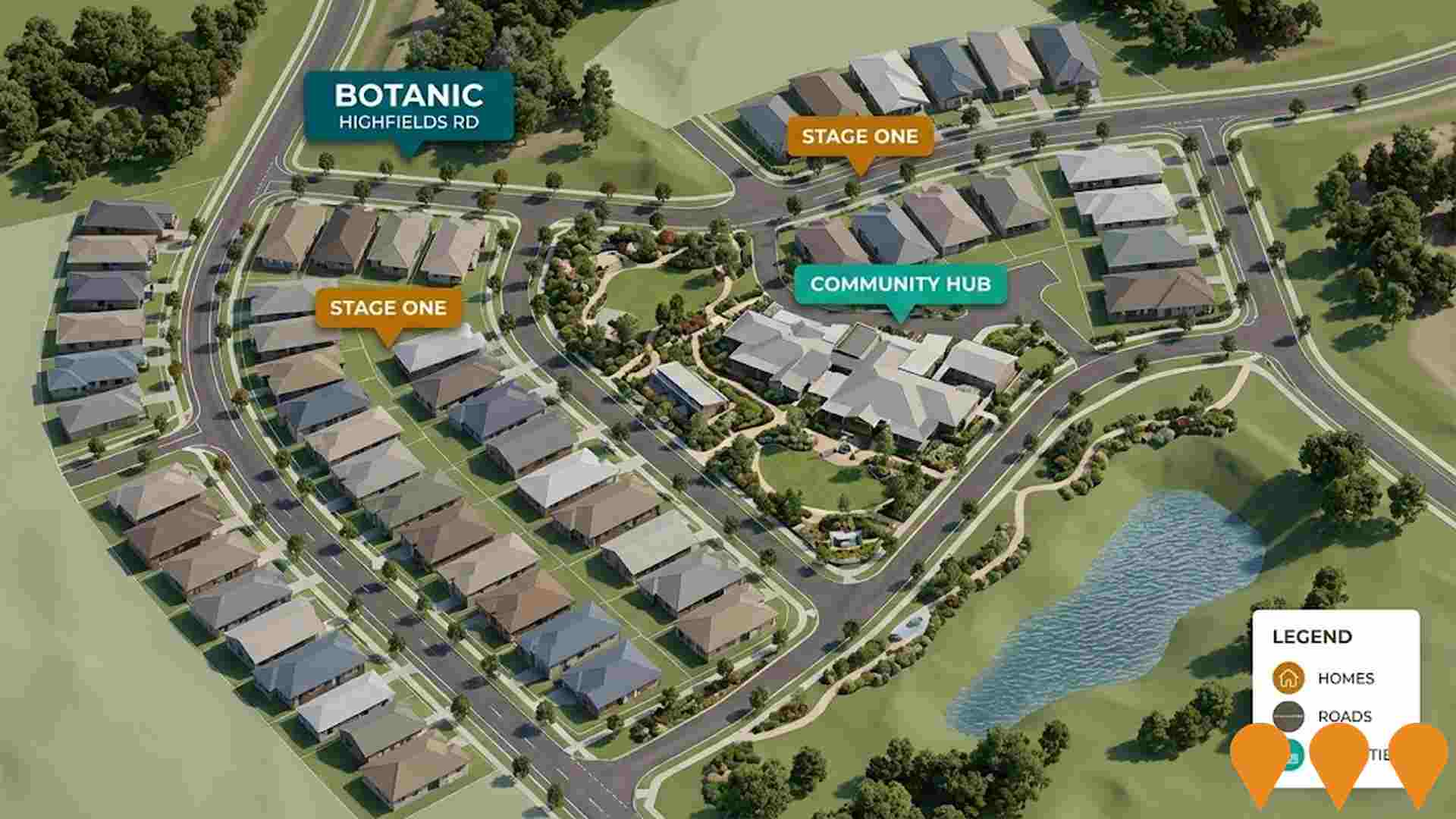
Central Highfields Masterplan
45-hectare town centre development at corner of Highfields and O'Brien Roads. Master-planned community with commercial, retail, residential areas, public transport hub, civic spaces, and fire station expansion. Expected to accommodate over 1200 residents across 13 stages.
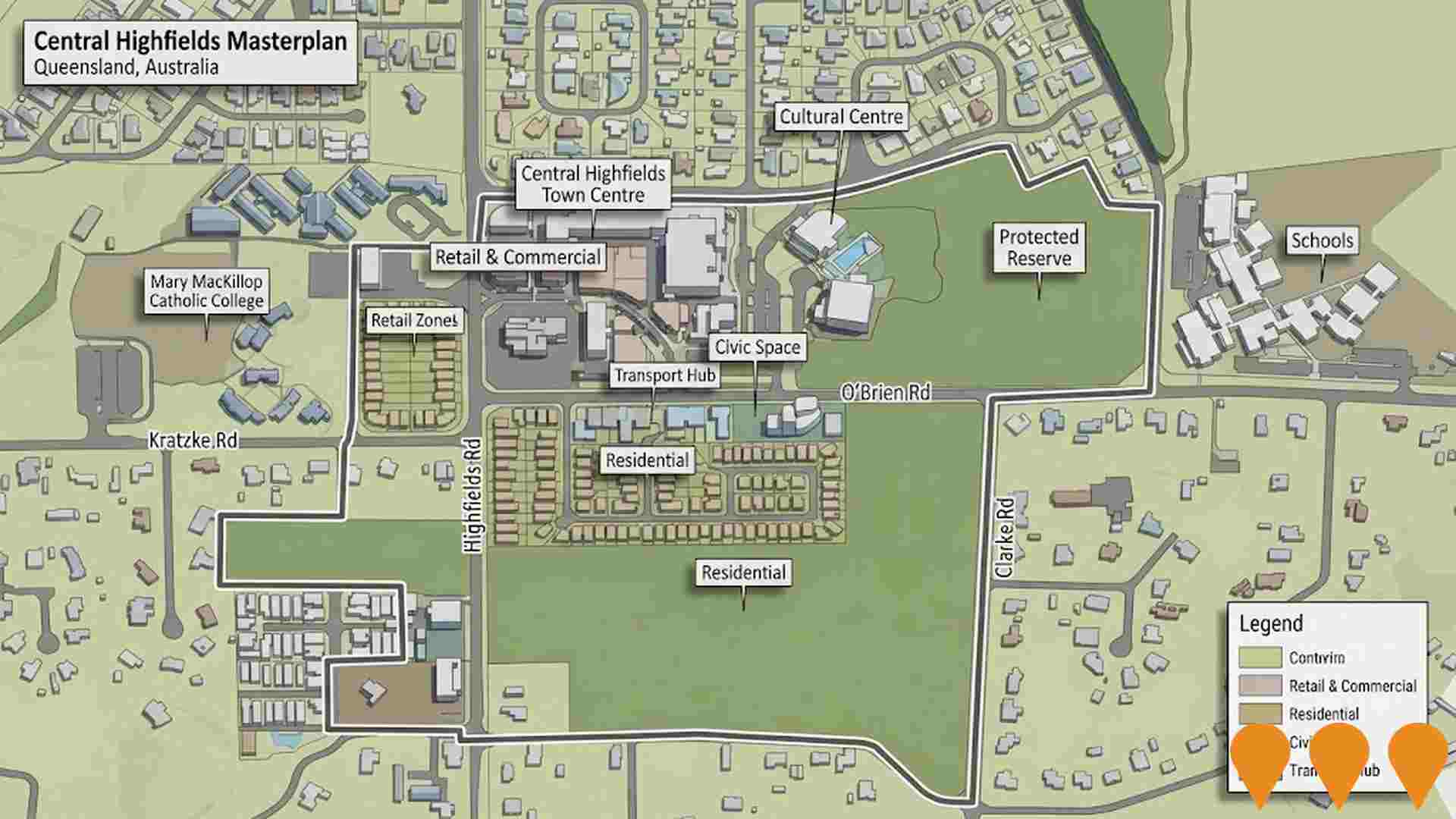
The Avenues of Highfields
Toowoomba's first premier residential development with 500+ lots across 13 stages. Award-winning subdivision featuring tree-lined streets, urban parklands, and strict builders guild standards. Winner of UDIA Queensland Best Regional Subdivision 2022.
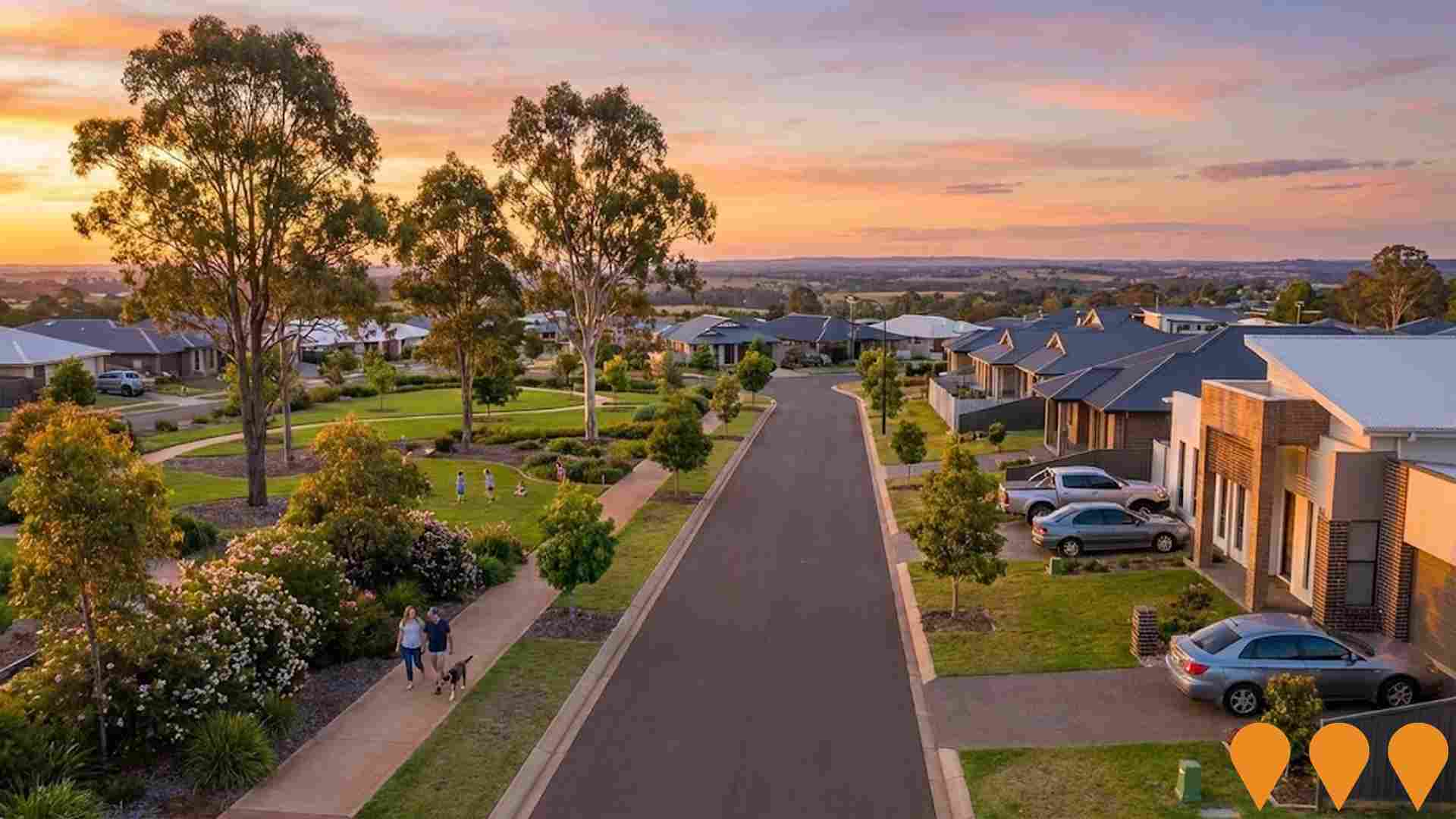
Highfields Trunk Water Main Infrastructure
Critical water infrastructure upgrade serving the growing Highfields community. New trunk water main installation to support residential and commercial development. Essential infrastructure for future growth.
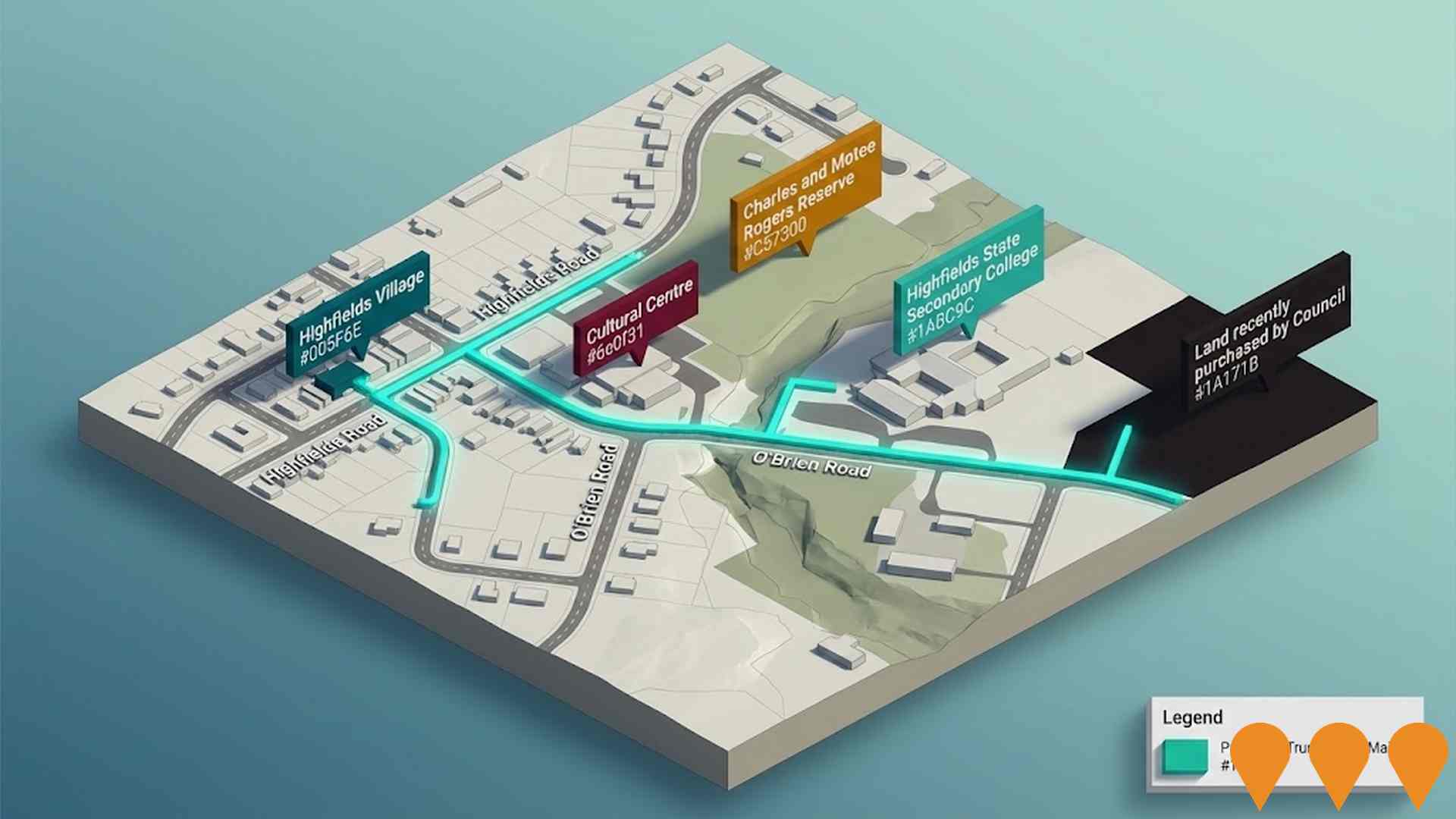
GemLife Highfields Heights
Contemporary farmhouse-inspired over-50s lifestyle resort with panoramic views of the Bunya and Gowrie mountains. Features modern homes, country club facilities, and creek frontage. Just 12 minutes from Toowoomba city.
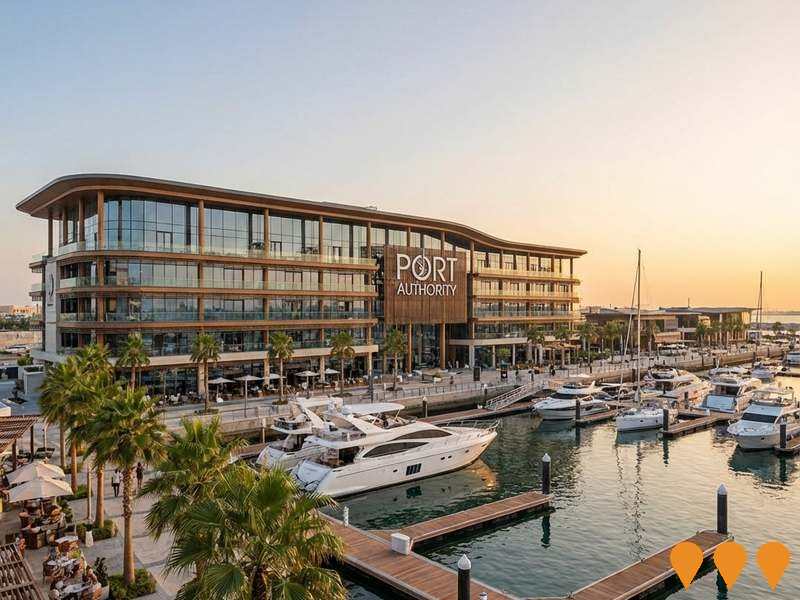
Kilalah Park Estate
Premium residential estate in the heart of Highfields featuring over 200 home sites with scenic views over the Bunya Mountains, tree-lined streets, parks, playgrounds, and proximity to schools and shops.

Highfields/Kratzke/O'Brien Roads Intersections Upgrade
Upgrade of key intersections with new roundabouts at Highfields Road/Kratzke Road/O'Brien Road, Highfields Road/Lauder Drive, and Highfields Road/Rogers Drive, including realignment of O'Brien Road, additional roundabout for Highfields town centre access, priority crossings for pedestrians and cyclists, and service relocations to support growing population and development in Highfields.

Walermare
Premium acreage residential estate in Highfields, Toowoomba, offering 93 large lots ranging from 0.5 to 2.5 acres with panoramic mountain views, spacious layouts, and proximity to amenities including schools, shopping, and recreational parks.

Employment
AreaSearch analysis of employment trends sees Highfields performing better than 90% of local markets assessed across Australia
Highfields has a skilled workforce with prominent representation in essential services sectors. The unemployment rate is 0.8% and there was an estimated 13.2% employment growth in the past year as of June 2025.
There are 9,137 residents employed, with an unemployment rate of 3.1%, which is below Rest of Qld's rate of 3.9%. Workforce participation is high at 64.3%, compared to Rest of Qld's 59.1%. Key employment industries include health care & social assistance, education & training, and public administration & safety. There is strong specialization in public administration & safety with an employment share of 1.9 times the regional level.
However, accommodation & food services are under-represented at 5.7% compared to Rest of Qld's 8.3%. Employment opportunities locally appear limited based on Census data comparison. In the year to June 2025, employment levels increased by 13.2%, labour force by 12.9%, reducing the unemployment rate by 0.3 percentage points. In contrast, Rest of Qld had employment growth of 1.8% and labour force growth of 2.0%, with a slight rise in unemployment. Jobs and Skills Australia's national employment forecasts from May 2025 project national employment growth of 6.6% over five years and 13.7% over ten years, but industry-specific projections vary significantly. Applying these projections to Highfields' employment mix suggests local growth of approximately 6.5% over five years and 13.5% over ten years.
Frequently Asked Questions - Employment
Income
Income analysis reveals strong economic positioning, with the area outperforming 60% of locations assessed nationally by AreaSearch
AreaSearch's latest postcode level ATO data for financial year 2022 indicates that Highfields' median income among taxpayers is $54,063, with an average of $65,421. Nationally, this is approximately average, compared to Rest of Qld's median of $50,780 and average of $64,844. Based on Wage Price Index growth of 13.99% since financial year 2022, current estimates for Highfields would be approximately $61,626 (median) and $74,573 (average) as of September 2025. Census data shows that household, family and personal incomes in Highfields cluster around the 67th percentile nationally. Distribution data reveals that the $1,500 - 2,999 earnings band captures 34.8% of the community (5,899 individuals), aligning with the broader area where this cohort likewise represents 31.7%. After housing costs, residents retain 88.1% of income, reflecting strong purchasing power and the area's SEIFA income ranking places it in the 7th decile.
Frequently Asked Questions - Income
Housing
Highfields is characterized by a predominantly suburban housing profile, with above-average rates of outright home ownership
The dwelling structure in Highfields, as per the latest Census, comprised 96.4% houses and 3.6% other dwellings (semi-detached, apartments, 'other' dwellings). In comparison, Non-Metro Qld had 81.4% houses and 18.6% other dwellings. The home ownership level in Highfields was 41.7%, with the remaining dwellings either mortgaged (43.4%) or rented (14.8%). The median monthly mortgage repayment in Highfields was $1,900, higher than Non-Metro Qld's average of $1,517 and the national average of $1,863. The median weekly rent figure in Highfields was recorded at $408, lower than Non-Metro Qld's $310 and the national figure of $375.
Frequently Asked Questions - Housing
Household Composition
Highfields features high concentrations of family households, with a higher-than-average median household size
Family households account for 85.5% of all households, consisting of 40.1% couples with children, 37.8% couples without children, and 7.2% single parent families. Non-family households make up the remaining 14.5%, with lone person households at 13.5% and group households comprising 1.0%. The median household size is 2.9 people, which is larger than the Rest of Qld average of 2.5.
Frequently Asked Questions - Households
Local Schools & Education
The educational profile of Highfields exceeds national averages, with above-average qualification levels and academic performance metrics
The area's educational profile is notable regionally with university qualification rates at 26.2% of residents aged 15+, exceeding the Rest of Qld average of 20.6%. Bachelor degrees are most prevalent at 18.0%, followed by postgraduate qualifications (4.6%) and graduate diplomas (3.6%). Vocational credentials are prominent, with 39.0% of residents aged 15+ holding such qualifications – advanced diplomas at 12.7% and certificates at 26.3%.
Educational participation is high at 31.3%, including 11.7% in primary education, 11.1% in secondary education, and 3.7% pursuing tertiary education. Six schools operate within Highfields, educating approximately 3454 students, with typical Australian school conditions (ICSEA: 1035) and balanced educational opportunities. The educational mix includes two primary, one secondary, and three K-12 schools. Note: where schools show 'n/a' for enrolments please refer to parent campus.
Frequently Asked Questions - Education
Schools Detail
Nearby Services & Amenities
Transport
Transport servicing is very low compared to other areas nationally based on assessment of service frequency, route connectivity and accessibility
The analysis of public transport in Highfields shows that there are 60 active transport stops currently operating. These stops serve a mix of bus routes. There is one individual route servicing these stops, collectively providing 100 weekly passenger trips.
The accessibility of transport in Highfields is rated as moderate, with residents typically located 562 meters from the nearest transport stop. The service frequency averages 14 trips per day across all routes, equating to approximately 1 weekly trip per individual stop.
Frequently Asked Questions - Transport
Transport Stops Detail
Health
Highfields's residents are relatively healthy in comparison to broader Australia with a fairly standard level of common health conditions seen across both young and old age cohorts
Highfields's health metrics closely resemble national benchmarks, with common health conditions seen across both young and old age cohorts at a fairly standard level.
Private health cover is present in approximately 52% of the total population (~8,883 people), slightly higher than the average SA2 area. The most prevalent medical conditions are arthritis and asthma, affecting 8.7 and 8.0% of residents respectively. A total of 67.9% of residents declare themselves completely clear of medical ailments, compared to 65.3% across Rest of Qld. In Highfields, 22.2% of residents are aged 65 and over (3,756 people), higher than the 18.8% in Rest of Qld. Health outcomes among seniors in Highfields are above average, outperforming even the general population in health metrics.
Frequently Asked Questions - Health
Cultural Diversity
Highfields is considerably less culturally diverse than average when assessed alongside AreaSearch's national rankings for language and cultural background related metrics
Highfields has a low level of cultural diversity, with 88.7% of its population born in Australia, 93.6% being citizens, and 96.3% speaking English only at home. The dominant religion is Christianity, practiced by 66.5% of Highfields residents, compared to 58.8% across the rest of Queensland. In terms of ancestry, the top three groups in Highfields are English (30.7%), Australian (27.9%), and Irish (10.0%).
Some ethnic groups show significant differences: German is overrepresented at 8.4% compared to the regional average of 8.0%, Scottish at 9.4% versus 7.9%, and South African at 0.5% compared to 0.3%.
Frequently Asked Questions - Diversity
Age
Highfields hosts an older demographic, ranking in the top quartile nationwide
The median age in Highfields was close to Rest of Qld's average of 41 years at the time of the census. This figure was well above the Australian median age of 38 years. Compared to the Rest of Queensland average, the 65-74 age cohort was notably over-represented in Highfields, making up 12.6% of the local population, while those aged 25-34 were under-represented at 8.9%. According to the 2021 Census, the 75 to 84 age group had grown from 6.1% to 7.5% of Highfields' population since the previous census. Conversely, the proportion of individuals aged 5-14 decreased from 15.9% to 14.1%, and those aged 45-54 dropped from 14.0% to 12.8%. Population forecasts for 2041 indicate significant demographic changes in Highfields, with the 75 to 84 age cohort projected to grow by 66% from 1,276 to 2,122 people. Meanwhile, the 15-24 age group is projected to decline by 21 people.
